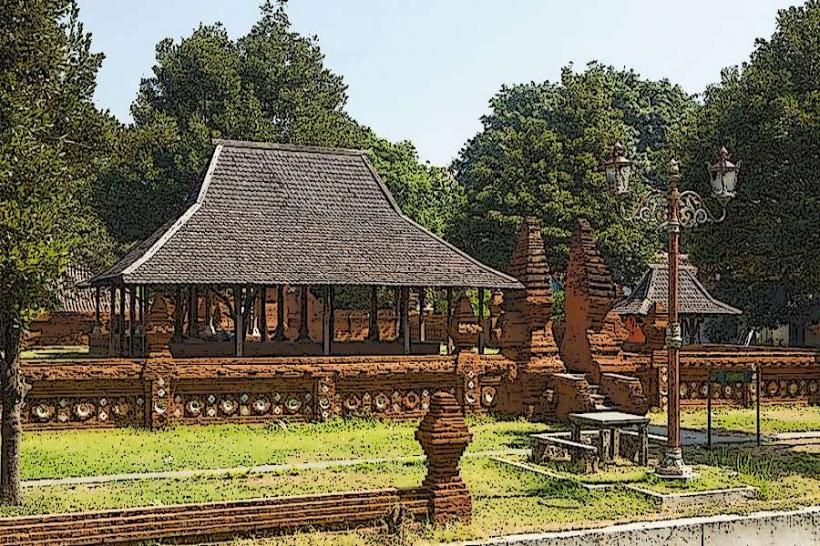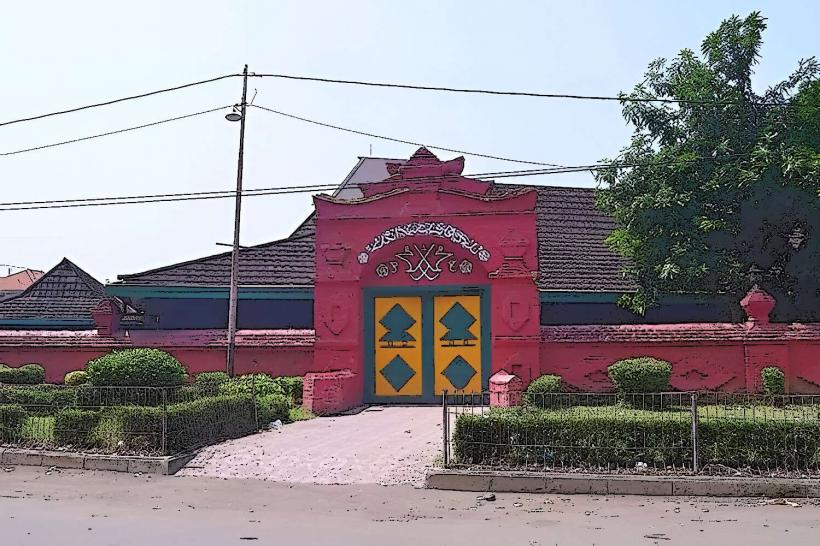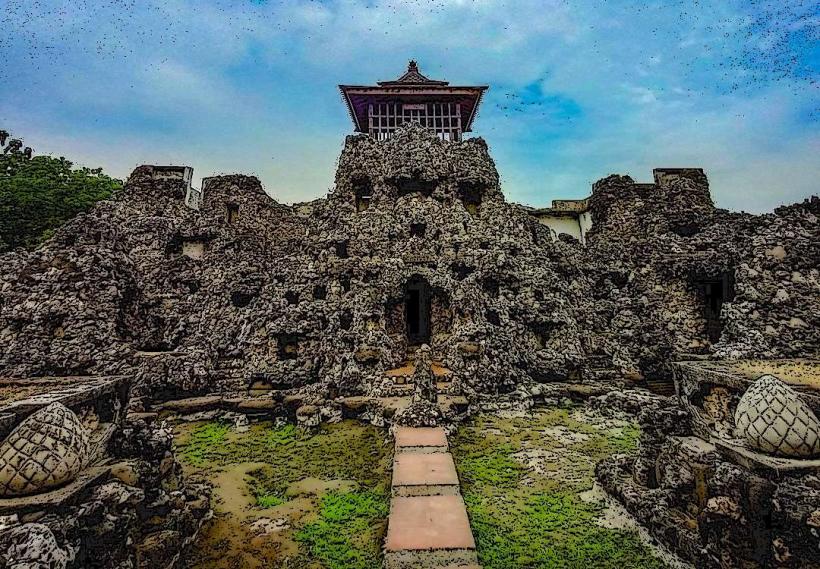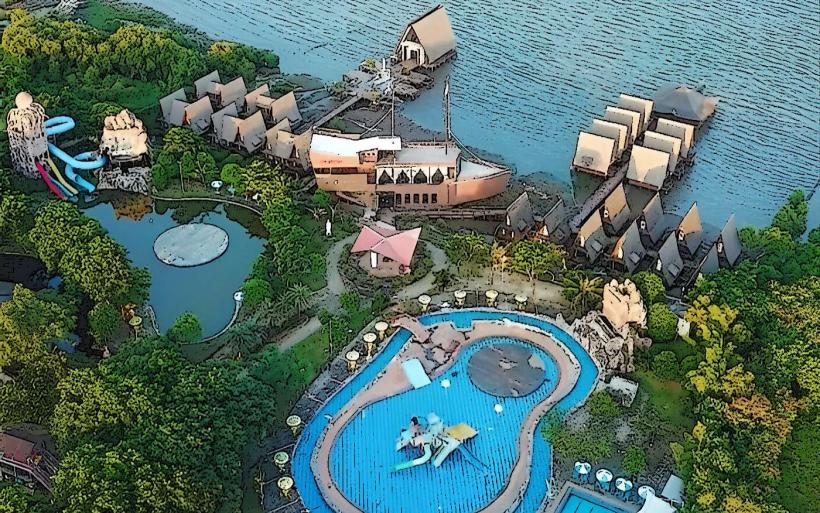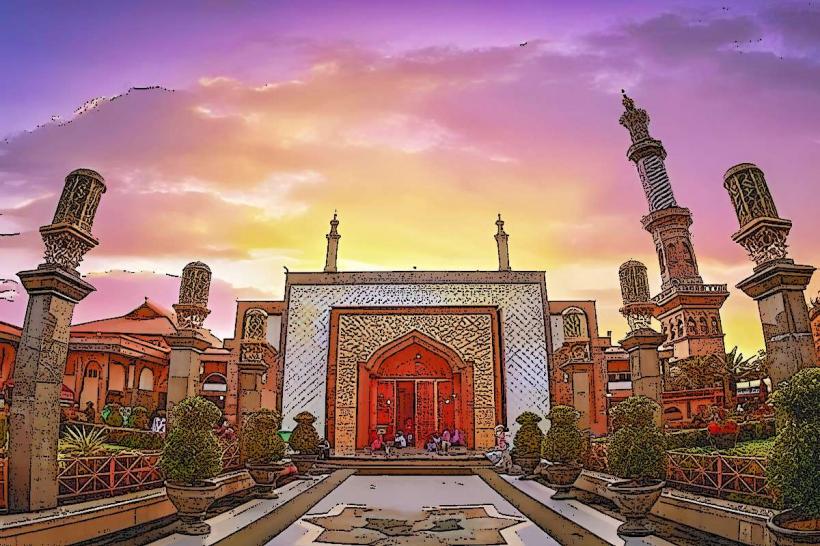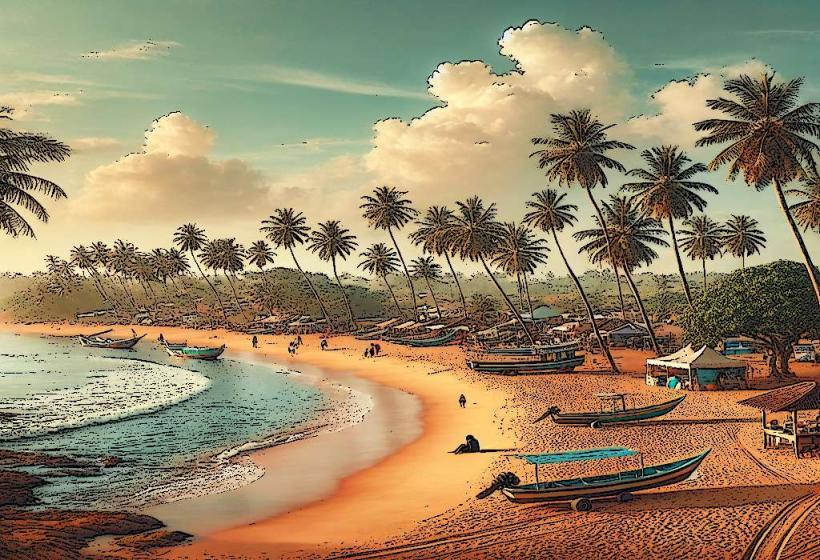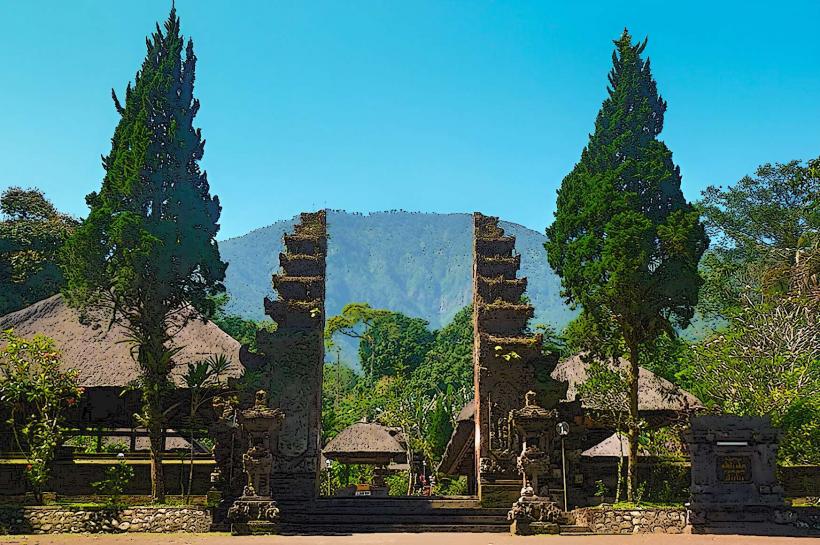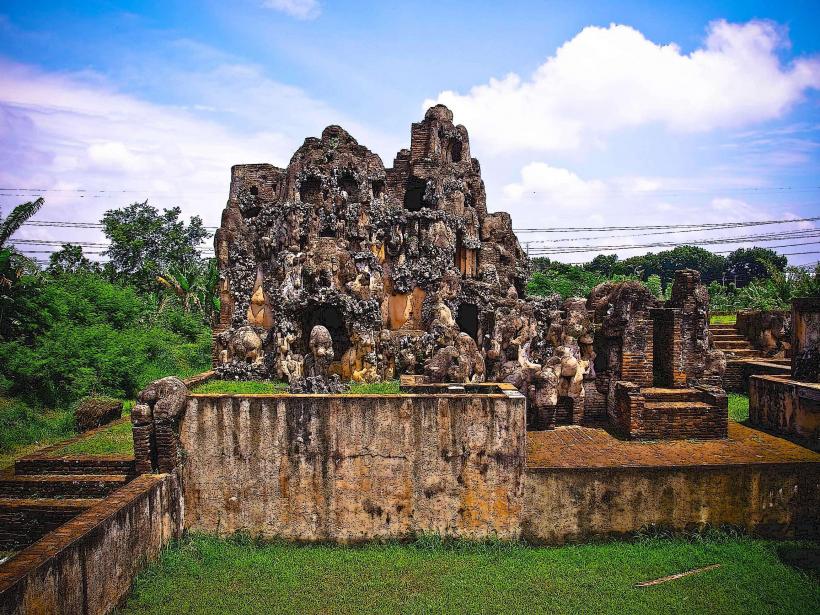Information
City: CirebonCountry: Indonesia
Continent: Asia
Cirebon is a city located on the northern coast of Java, Indonesia, in West Java province. It is a major port city with a rich history, blending Javanese, Sundanese, and Chinese influences. Historically, Cirebon was a prominent center for trade, culture, and politics, playing a key role in the spread of Islam in Indonesia. Today, Cirebon is a bustling city known for its unique blend of cultural traditions, historical sites, and vibrant local industries.
Geography and Climate
- Location: Cirebon is situated on the north coast of Java, around 200 kilometers (124 miles) east of Jakarta. It lies along the Java Sea, making it an important port city historically and in contemporary trade.
- Size: The city covers an area of approximately 37.5 square kilometers (14.5 square miles).
- Climate: Cirebon has a tropical climate with distinct wet and dry seasons:
- Wet season: Occurs from November to April, with heavy rainfall and high humidity.
- Dry season: Runs from May to October, with lower rainfall and temperatures ranging from 25°C to 32°C (77°F to 89°F).
History
- Early History: Cirebon has been a significant port and trading center for centuries, dating back to the Sunda Kingdom and Majapahit Empire. It became a crucial part of the Islamic Sultanates of Java and served as a hub for spreading Islam across the island.
- Sultanate of Cirebon: Cirebon’s historical importance is most prominently tied to the Cirebon Sultanate, which was established in the 15th century. The sultanate became a significant center for trade, culture, and Islam, fostering the development of local art, architecture, and culture.
- Colonial Era: Cirebon was part of the Dutch East Indies, with the Dutch exploiting the region for its strategic location and natural resources, including tobacco, rice, and other agricultural products. It was a key city in the Dutch colonial administration.
- Post-Independence: After Indonesia's independence in 1945, Cirebon has developed as an important regional center in West Java, maintaining its status as a key port city while also becoming a center for agriculture and light industry.
Demographics
- Population: Cirebon has a population of around 350,000 people, making it one of the larger cities in West Java.
- Ethnic Groups: The majority of Cirebon’s population is of Javanese and Sundanese descent, with a significant number of Chinese Indonesians. The city is known for its cultural diversity, with different ethnic communities living harmoniously.
- Religion: The majority of Cirebon’s population practices Islam. There are also significant Christian and Buddhist communities, especially among the Chinese population. The city is a major center for Islamic learning and culture.
Culture
Cirebon has a rich and unique cultural heritage, combining Javanese, Sundanese, and Islamic influences, as well as a strong connection to Chinese culture.
- Language: The primary language spoken is Indonesian (Bahasa Indonesia), but Cirebonese (a Javanese dialect) is commonly used among locals. Sundanese and Chinese are also spoken by some communities.
- Cuisine: Cirebon is renowned for its unique culinary offerings, reflecting the mix of Javanese, Sundanese, and Chinese influences:
- Nasi Jamblang: A traditional Cirebon dish of rice served with a variety of side dishes, including beef, chicken, and vegetables, wrapped in banana leaves.
- Empal Gentong: A spicy beef soup made with coconut milk and turmeric, often served with rice and crackers.
- Tahu Gejrot: A dish made with fried tofu in a sweet and spicy sauce made from tamarind, palm sugar, and chili.
- Sate Cirebon: Grilled skewers of meat, usually chicken or beef, served with a peanut or soy-based sauce.
- Kerupuk Cirebon: Cirebon-style crackers made from fish or shrimp, commonly served as snacks or side dishes.
- Traditional Arts: Cirebon is known for its traditional dance, music, and crafts. The most famous art form is Tari Topeng Cirebon, a traditional masked dance that tells stories of the region’s history and culture. Wayang Kulit (shadow puppetry) is also an important cultural tradition in the city.
- Textiles: Cirebon is famous for its batik, a traditional fabric-dyeing technique. Cirebon batik is known for its distinctive motifs and designs, often featuring floral patterns and influences from Chinese and Islamic cultures.
Tourist Attractions
Cirebon offers a variety of historical, cultural, and natural attractions:
Historical and Cultural Sites
Keraton Kasepuhan:
- The royal palace of the Cirebon Sultanate, built in the 16th century, is a magnificent example of Javanese and Islamic architecture. The palace houses a museum with artifacts from the Sultanate and offers insights into Cirebon's royal history.
Keraton Kanoman:
- Another royal palace, which is known for its distinctive architecture and beautiful gardens. The palace also hosts cultural events and provides a glimpse into the history of the Sultanate.
Masjid Agung Sang Cipta Rasa:
- The Great Mosque of Cirebon, built in the 15th century, is a beautiful blend of Javanese, Islamic, and Chinese architectural styles. The mosque is one of the oldest and most significant in the region.
Taman Sari Gua Sunyaragi:
- A historical site that includes the ruins of a royal garden and bathing complex, originally built in the 17th century. The site is known for its unique architectural style and stone carvings.
Cirebon Batik Center:
- A place where visitors can learn about the history and production of Cirebon batik. The center also offers workshops where tourists can try their hand at creating their own batik designs.
Natural Attractions
Keju Cirebon:
- A scenic spot known for its coffee plantations, offering a tranquil environment surrounded by lush greenery. It’s a great location for hiking, bird-watching, and enjoying fresh local coffee.
Pantai Kejawanan:
- A beach located near Cirebon, perfect for a relaxing getaway. Visitors can enjoy the sea breeze, local seafood, and a peaceful coastal atmosphere.
Gua Sunyaragi:
- A natural cave that was historically used by the Cirebon Sultanate as a meditation and retreat site. The surrounding area offers beautiful landscapes and a chance to explore nature.
Economy
Cirebon's economy is diverse, with contributions from agriculture, trade, industry, and tourism:
- Agriculture: The region around Cirebon is known for the cultivation of rice, tobacco, cocoa, and coconut. The area is also famous for fish farming, given its proximity to the coast.
- Trade and Commerce: As a port city, Cirebon has been historically important in trade. The city's port facilitates the movement of goods, particularly agricultural products, textiles, and construction materials.
- Manufacturing: Cirebon is home to several industries, including textiles, batik, food processing, and furniture production. The food industry, particularly the processing of seafood and traditional snacks, is an important sector.
- Tourism: With its rich cultural heritage and historical sites, Cirebon has seen an increase in tourism. Cultural tourism, particularly related to the royal palaces and batik, has become a significant contributor to the local economy.
Transportation
Cirebon is well-connected to other parts of Java and beyond:
- Rail: The Cirebon Railway Station connects the city to major cities such as Jakarta, Surabaya, and Bandung.
- Road: The city is well-connected by road to other cities in West Java, with highways leading to Jakarta and other parts of the island.
- Sea: The Port of Cirebon serves as a key gateway for goods, particularly agricultural products, and is part of the city's vital trade infrastructure.
- Air: Cirebon Airport (also known as Penggung Airport) serves domestic flights, primarily connecting to Jakarta and other nearby cities.
Challenges
- Traffic Congestion: Like many growing cities in Indonesia, Cirebon faces issues with traffic congestion, particularly during peak hours and in the city center.
- Environmental Concerns: As a port city with industrial activity, Cirebon faces environmental challenges, including waste management, air pollution, and the impact of industrial activities on natural resources.
Conclusion
Cirebon is a vibrant city that blends Javanese, Sundanese, Chinese, and Islamic cultures into a unique and fascinating experience. With its rich history, traditional arts, delicious cuisine, and strategic location on the north coast of Java, Cirebon continues to thrive as an important center for trade, culture, and tourism in the region. Whether exploring its historical palaces, enjoying the coastal scenery, or experiencing the art of batik, Cirebon offers a distinct and enriching experience for travelers.

